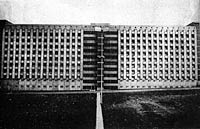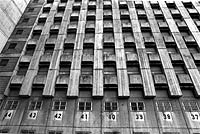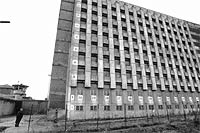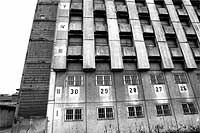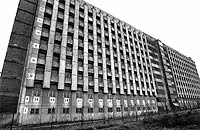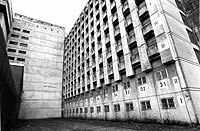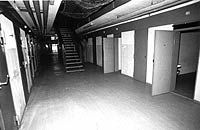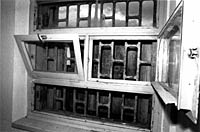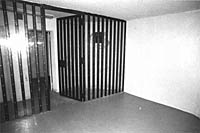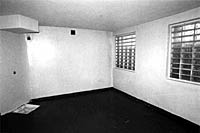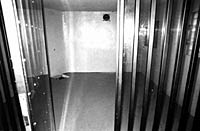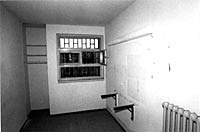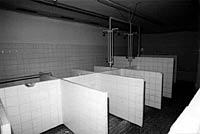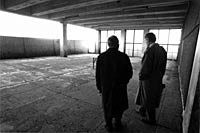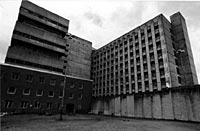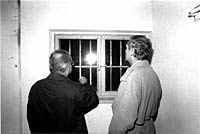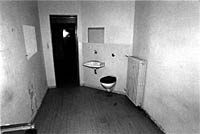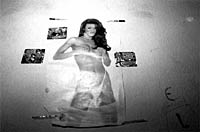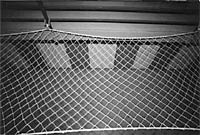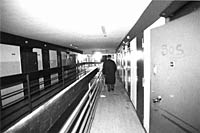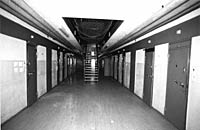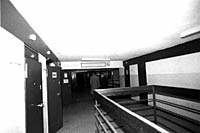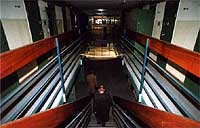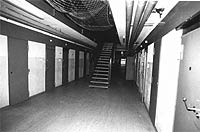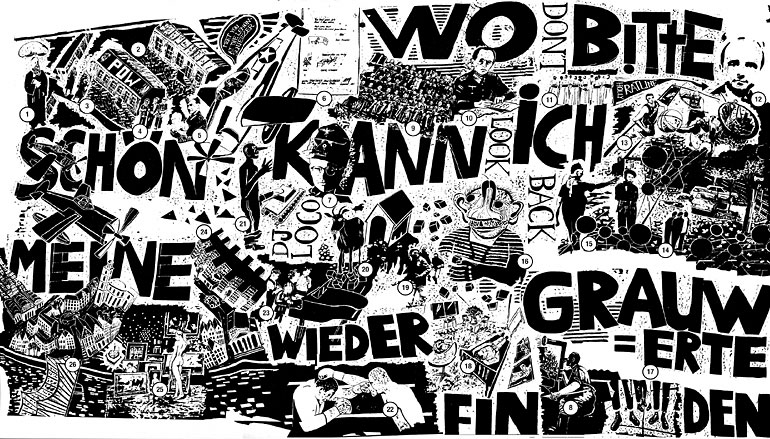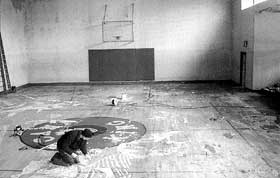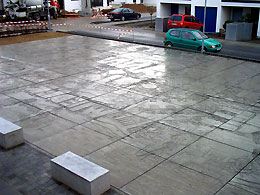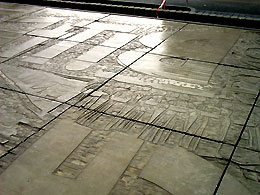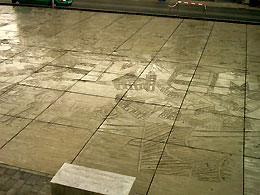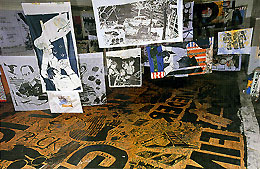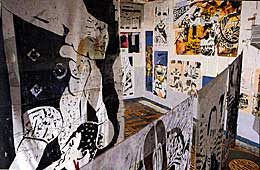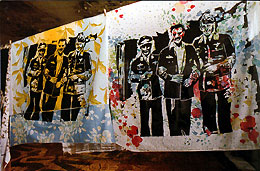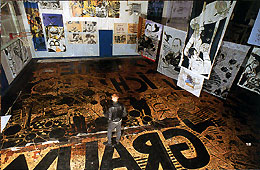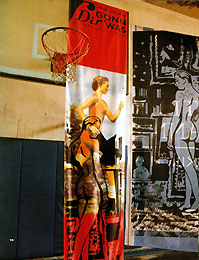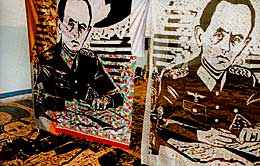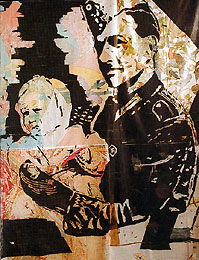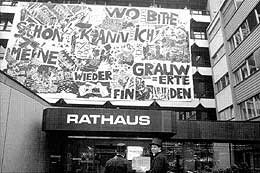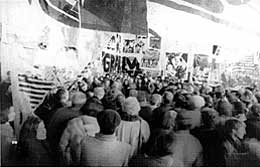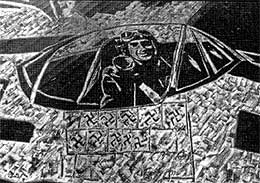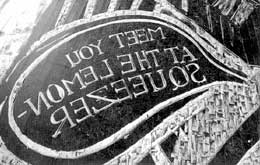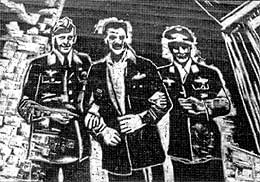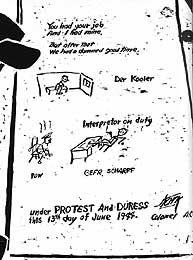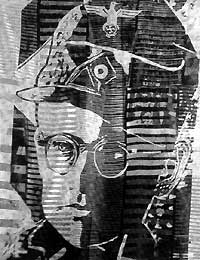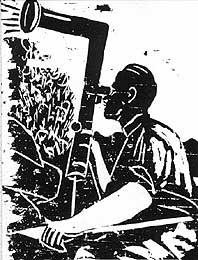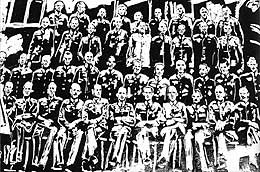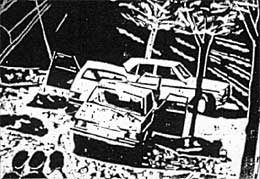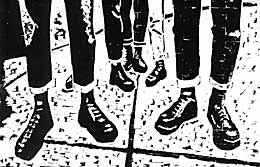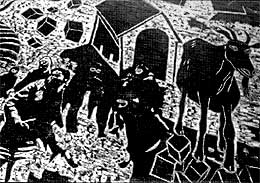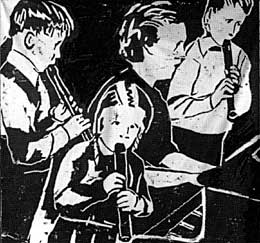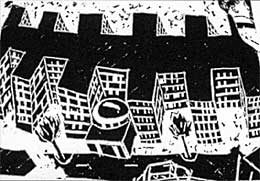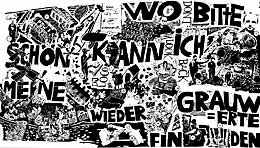Project in Frankfurt-Preungesheim jail, 1998-2000
Not approved by the Justice Department.
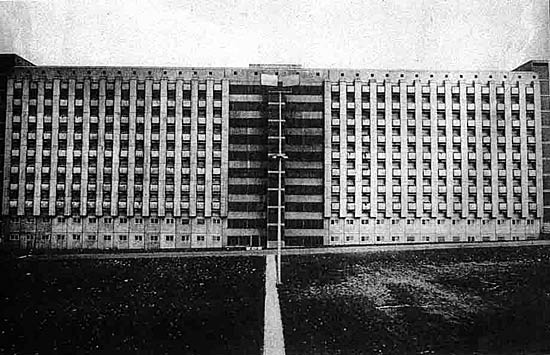
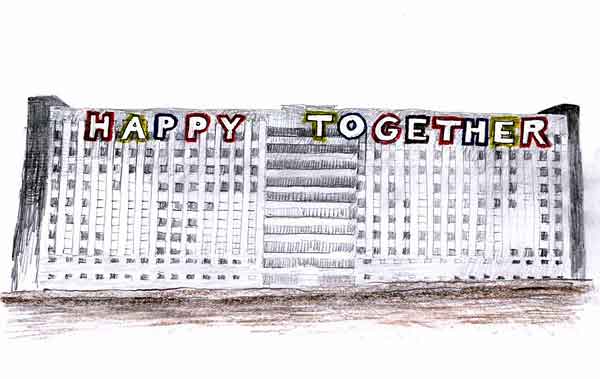
In October 1998 I presented my concept to the then Hessian Minister of Justice Rupert von Plottnitz (the Greens) in writing and asked for permission. I received support both from Kasper König, the then rector of the Städelschule, and from Claudia Scholtz, the managing director of the Hessische Kulturstiftung. But apart from a site visit accompanied by the former prison warden and an employee from the Ministry of Justice, I was unable to achieve anything. The reason was: the demolition had not yet been decided. This seemed like a pretext to me and not a plausible reason for a general rejection, because I had made it clear from the outset that I would not interfere with the substance of the building and that I would only work with video, photography and linocuts. It was “left to me” to turn to the ministry again if the situation changed.
In May 2000 I learned from the press that the decision to demolish the building had been made. I wrote again to the Ministry of Justice – now part of the CDU-led state government. Due to their conservative orientation, my expectations were not very high. As for confirmation, I quickly received another rejection, now on the grounds that the demolition work “will begin shortly”. In fact it took more than 6 months until the excavators arrived.
A red-green government, a black-yellow one – an artistic intervention in a former prison is undesirable for the Hessian judiciary. Whether it was the feared public view behind the prison walls and cell doors or my critical attitude towards the penal system and the state that was decisive for the rejection, remains to be seen. In any case, it is a cultural testimony of poverty.
The decision to close and demolish this monster may have been influenced by the visit of representatives of the UN Commission on Human Rights. They had found “inhumane prison conditions” here. A move away from the politics of criminalizing and locking away does not signal them at any rate, because the next prison buildings are already planned, the foundations have already been excavated, so that more prisoners than ever before can be held behind high walls in Hesse, if possible unnoticed by the public. In this way, the appropriate political testimony of poverty is added to the cultural one. That doesn’t make things any better, but at least it makes them round.
Thomas Kilpper
January 2001
With my work I would like to deal with this place, its function and concrete condition formally and contentwise. In a physical working process, I would like to cut and chisel images that stand in the context of this place, images on the subject of “punishment and discipline – aggression and crime – power and impotence – freedom and captivity” into the ground, the walls and (cell) doors. I would like to do this with my physical strength as well as with the help of machines like routers, flex / cutters etc. The work would extend to one of the floors in the cell wing. On the floor surface one of the largest “linocuts” ever created could be created. The continuous approx. 4mm thick plastic covering seems to me to be well suited for this. I would then blacken the various motifs and print them on fabric or paper.
I want to dedicate a part of the work to looking back at the history of punishment (up to the “birth of the prison”).
Another part would be to systematically search and photograph signifying statements of the detainees (wall drawings, comics, sayings, newspaper articles, etc…) in the building and let them flow into the work.
A third aspect would be to weave my subjective experiences (keyword: “What do I have to do with the whole thing?”) into it.
In several respects, this project would mean the concrete further development of my last work in the former US military camp Camp King in Oberursel. The result was a giant woodcut, for which the combination of “official” and personal history was an essential starting point.
From an artistic-technical point of view, I would like to “take away” the substance found and thus redefine the place and space. I am thus practicing the classic sculptural procedure par excellence.
Complementary / Parallel to this work inside the building, I would like to work with the façade and thus the effect on the outside space.
The idea is to have a text in large letters run around the top floor. E.g. “happy together” (back), “feel me, touch me, kiss me, hurt me” (front towards Kreuzäckerstraße). The building thus becomes a direct carrier of images and meaning. (The exact text still has to be worked out.)
The idea of orienting part of the work to the outside has a historical background. In earlier times, punishment was above all a public act – in some countries it is still the case today. Just as punishment, in particular imprisonment, is structured here and today, it essentially takes place behind the walls, quasi hidden. This part of my work – with its effect in the public space – would be, so to speak, a reference to this history and the public character and claim of punishment.
In addition to those mentioned here, there are other alternative project ideas. My preferences, however, clearly apply to the ideas developed here.
To the realization:
My wish would be to start work next spring (March). (I would like to make the photo documentation of the carvings in the cell walls rather, in order to be able to begin with the preparations – like e.g. the selection of the motives). The possibility of an exhibition after completion of the work on site would of course be very desirable.
My idea is to show the printing block (the so-called “negative”) as well as the prints (the “positive”) inside the building in addition to the work on the facade. Using the prints hung on clotheslines, the room would be structured and structured in a new, artistic way.
Thomas Kilpper
Frankfurt/Main
November 1999
